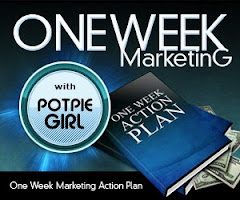The article resource box is the most critical part of your article.
This is where you make your pitch for your yourself and your
website. It's also where you create a call to action.
Article writing and publishing is an exchange process - you share
some of your knowledge and experience in the body of the article
in exchange for the right to make a pitch at the end.
The resource box is important also because this is the only
place that many article directories will let you place a URL link.
Your goals in creating a resource box should be:
- establish or reinforce your internet profile
- build your credibility in the topic area involved
- capture subscribers to your list
- encourage visitors to your website, blog or Squidoo lens
WHAT TO INCLUDE
Your resource box should include the following:
1. your name - to establish who you are and to build your
internet profile (e.g. Ron Passfield, PhD, affiliate marketing coach)
2. your unique "selling" proposition - why anyone should
read your article, your unique capacity to help/assist the reader
(e.g. "author of an e-book on Squidoo affiliate marketing" ).
3. your Squidoo lens/website address - this creates the link
from the authority site (article directory) to your site and builds
your Google page rank and positioning (and probably your
Lensrank) - note: most well established article directories have
a Google PR rank of 5 or 4.
4. call to action - this is critical. What do you want the reader
to do after reading your article? (e.g. visit Ron's Squidoo lens to
subscribe to his weekly ezine on Squidoo marketing strategies,
tips, hints and resources).
Some further tips on what to include
1. use your articles to create a profile relevant to the topic
(e.g. when I was focusing on affiliate marketing articles, I used the
profile of "affiliate marketing coach", now I tend to write about
Squidoo and use the profile 'Top 100 Squidoo lensmaster"
2. in your article you are selling yourself not a product, program
or piece of software - establish why they should read your article
and follow your call to action.
3. decide what is your primary "call to action" and use only one
call to action but enable other actions (e.g. I now say
"visit my Top 100 Squidoo lens for access to my email course and
.....; but I also include a link to this A.M.C. blog without a call
to action)
4. most articles directories only allow two urls in the resource box
and Ezinearticles.com allows three - use all two or three URLs
as appropriate.
5. make sure your urls are hyperlinked - some article
directories will create the hyperlink for you if you put in the full
url in the resource box; others expect you to create the html
code (check the author guidelines and/or "preview" your article
to see what happens).
6. make sure your resource box is keyword rich (but
don't go overboard into keyword spamming) - think about
the keyword (s) you are targeting.
7. use an anchor text with a keyword other than that
shown in your url (this gives you two bites of the cherry
as Google picks up the keyword from the url itself), e.g. my
lens is http://www.squidoo.com/squidoomarketingstrategies
- I now use "squidoo affiliate marketing" or "squidoo marketing"
as my anchor text and not "squidoo marketing strategies" -
the result is I now have top ten Google positions for all three
keywords, not just one).
8. make sure the keywords you use are relevant to the
content of the article (and use variations of them within
the article).
9. where possible add your photo to your article directory
profile - most directories will publish it along with your article
- this helps to build your internet recognition.
THINGS TO AVOID IN THE RESOURCE BOX
1. direct affiliate links - most directories do not allow direct
affiliate links - this is the advantage of Squidoo lenses because
you can direct people to your lens where you have your
affiliate links embedded in your modules.
2. hard sell of a product, program or software - most directories
will not publish your article because it puts readers off.
3. your phone number or email as you will get spammed.
4. multiple links, like every lens you ever created - select what's
best for the article topic.
5. so much text that it takes up 50% of the article - aim for about
15-20% (although some article directories tempt you with a lot
more word space).
6. repeated anchor text with the same keyword - this is treated
as spam - it's better anyway to use variations of your keywords.
Related posts:
Article Writing (1) - article writing as viral marketing
Article Writing (2) - article writing and bum marketing
Resource for article writing and publishing:
Christopher Knight's Ezinearticles.com Blog
************************************************
Product of the Week -
Squidoo Queen Meets Bum Marketing
Kelly Stone has just released version 2 of this excellent
ebook. I have used some of the strategies in Kelly's
ebook on a daily basis. She shows you how to link
article writing to income creation by using the bum
marketing method. When I read her ebook I
immediately bought Micronichefinder to locate
profitable niches for article writing. You can get
your copy of Kelly's ebook by clicking the link below.
The ebook is supported by an excellent forum - see
you there.
You can pick up Kelly's ebook by clicking the link:
http://www.squidooqueen.squidoomarketingstrategies.com/
************************************************
Ron Passfield is a Top 100 Squidoo Lensmaster and
provides free resources for Squidoo affiliate marketing
on his Squidoo lens:
http://www.squidoo.com/squidoomarketingstrategies
Ron is the author of the ebook:
Squidoo Marketing Strategies
Technorati Tags: Squidoo affiliate marketing, Squidoo, Squidoo marketing strategies, article writing, Squidoo Marketing Strategies e-Book, affiliate marketing, Squidoo tips, MicroNicheFinder, traffic







No comments:
Post a Comment